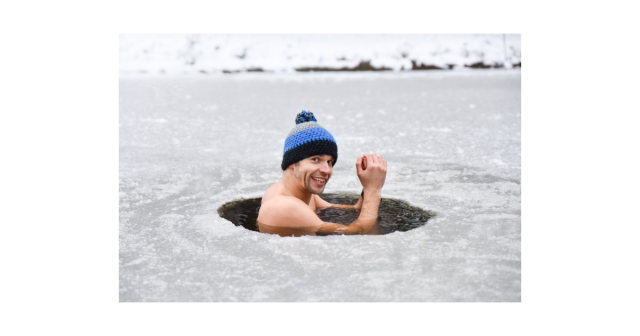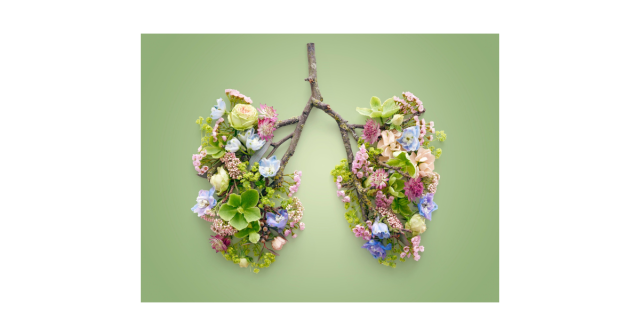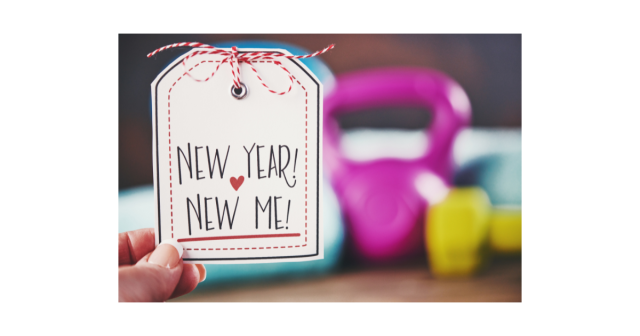Camel Syndrome
Do you need ‘camel syndrome’ for optimal hydration?
‘Phone, keys, bottle? Yup, good to go!’ is my usual mantra as I dash out of the house.
If you’re like me, a water bottle will be part of your essential kit, giving access to water wherever you go and total control of your hydration level. Bottle carrying is a modern habit, referred to as ‘camel syndrome’ by health care ethics professor Inez de Beaufort who noticed that people aged 12 to 30 habitually carried water – one told her, “I’m not dressed without my bottle of water”. Bottle carrying ‘camels’ are associating themselves with good habits such as exercise and healthy eating, and will appear fashionably ‘cool’ (1). But do we need to constantly have water on board to avoid dehydration? Can it become an obsession rather than a necessity?

Water makes up around 60% of body weight in men and 55% of body weight in women (because women generally have more body fat) (2). Water is undoubtedly the elixir of life; without it we are unlikely to survive beyond around 3 days. Problems such as a dry mouth, dizziness, urine infections, loss of memory, fatigue and headaches will arise when we are even mildly dehydrated. This will escalate to low blood pressure and a raised heart rate if further dehydration occurs (3). And, if that hasn’t made you reach for your water bottle, as I’ve just done, I’m not sure what will!
Water will:
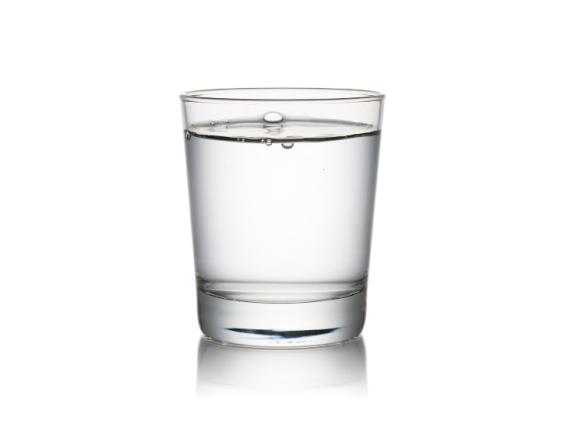
- eliminate waste through urine and breath
- deliver oxygen throughout the body
- lubricate joints and the spinal cord
- form saliva to break down food
- keep mucous membranes moist
- regulate body temperature through sweating and breathing
- balance the pH of the body
- help transport toxins away from cells (4)
So how much should you drink?
The NHS Eatwell Guide recommends that we drink 6 to 8 glasses of fluid a day, more specifically 2000ml for men and 1600ml for women for optimal hydration. Remember that 20-30% of our fluids come from the food we eat, especially those vegetables and fruit with a high water content, like apples, celery, lettuce and strawberries (5). Luckily we are equipped with a natural thirst mechanism but it only kicks in when we are already a little dehydrated, so regular sipping from your bottle is a good idea. If you prefer to drink from a glass, you can use an app on your phone such as My Water and Aquaalert to remind you when to drink (6). The thirst response is not as reliable in older people and children and it is essential that both these groups are encouraged to drink at regular intervals. Children have water bottles at school, and perhaps more grandparents would benefit from becoming fashionably ‘cool’ with their own bottles!
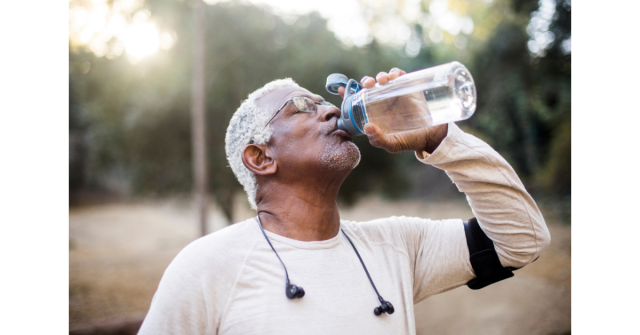
How will you know if you’re drinking enough?
The colour of your urine is a good indicator of optimal hydration. When you are dehydrated the kidneys reduce how much water you pass and this makes urine darker and more concentrated. If you are drinking enough, your urine will be a pale-yellow colour (2).
The amount you drink will vary depending on the level and intensity of activity, your age and if the weather is hot. When you sweat it’s important to remember that you also lose electrolytes along with water. The loss of electrolytes, especially in prolonged and intense situations, will certainly impair performance, and can also cause muscle spasms, heart palpitations, confusion and fatigue. In severe cases of dehydration a doctor will check your heart rate, blood pressure, how well your kidneys are functioning and a blood test will check your level of electrolytes. Untreated dehydration can become a very serious condition (3)(7).
What should you drink to stay optimally hydrated?
Water – the obvious choice for optimal hydration, it’s on tap and has no calories or sugar.
Electrolyte drinks – aim to replace the key electrolytes (sodium, potassium calcium, magnesium, phosphate and chloride) especially on hot days and during/after prolonged and intense exercise. Beware the hidden nasties in branded electrolyte drinks, such as sorbitol, sucralose, maltodextrin, potassium sorbate and fructose.
Better still, make your own, save money and stay healthy – here’s a simple recipe: (8)
- 500ml of water (or coconut water)
- 1/2 teaspoon of salt (Himalayan Pink Salt)
- 4 teaspoons of runny honey
- 1 large slice of lemon or lime (squeezed or added whole)
Other drinks for optimal hydration
Tea and Coffee – despite caffeine being a diuretic and making us pass more urine it’s okay to drink a moderate amount of tea and coffee as part of your fluid intake. And there’s always decaffeinated. Swiss Water decaf is the healthiest to buy (9).
Fruit juices and smoothies – these contain some vitamins and minerals but beware the sugar content. Okay if you limit yourself to just one small glass. However, whole fruit does contain a lot of water and additional fibre which helps to slow down the digestion of fructose sugar to a healthy level so feel free to indulge in your five-a-day.
Milk – contains essential nutrients such as protein, B vitamins, iodine and calcium. If you need to reduce your saturated fat intake choose semi-skimmed or skimmed. Personally, I prefer the full-fat organic whole milk to get all the nutrients in this beautiful drink as nature intended.
Plant-based milk – always check the labels and choose those that are lower in sugar and fortified with vitamins. Avoid plant-base drinks that contain carrageenan and xanthin gum and only have a few natural ingredients (10).
Can you over-hydrate?
Yes, it’s possible to overdo hydration. Too much water will lead to a feeling of being bloated and nauseous as it will dilute and affect the balance of your body’s fluids. Be guided by your natural thirst response and sip water/electrolytes regularly rather than gulp huge amounts at any one time (11).
Water bottles – fashion or function?
I was surprised to read that about 7.7 billion single-use plastic bottles are still bought in the UK every year and, with our water carrying habits, it’s imperative for the environment that this figure reduces (12). It’s encouraging that many social media feeds promote reusable bottles as an instagrammable fashion and lifestyle item, where just the right bottle can speak volumes about its user.
On TikTok #waterbottle boasted 3.1 billion views! In 2022, sales of reusable water bottles in the USA went up to $2 billion from the $1.5 billion spent in 2020 (12). Choosing your bottle obviously demands more than just thinking about how much water it will hold. Whether your budget stretches to a designer bottle from Louis Viutton for £1,310, a Prada bottle for £75 or one from Sports Direct for £3.00, the hydration benefits will be the same, if not your social media feed! (13)(14)
Keep it clean!
Using a reusable water bottle every day may mean forgetting it needs a proper wash from time to time. Bottles can become a breeding ground for toxic fungi, particularly if you take part in any water-based activity, like rowing or canoeing – there are many recent reports of e-coli and other bacteria thriving in our inland waterways. Check whether your water bottle will safely survive a dishwasher cycle, if not, there are bottle brushes with which to give your bottle a really good soapy scrub. For the record, I clean mine daily with hot soapy washing-up liquid!
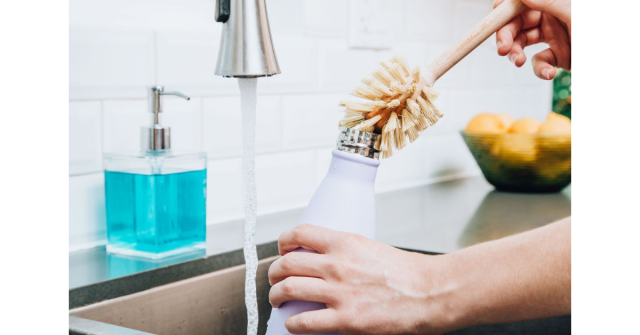
Whether you’re a bottle carrying ‘camel’ like me, or prefer your fluids in a glass – it’s clear that regular hydration is a necessity. So keep on drinking and I wish you ‘Happy Hydrating’.
- The Camel Syndrome
- Hydration
- What To Know About Dehydration
- How Long Can You Live Without Water
- Water, Drinks And Hydration
- 9 Best Hydration Apps For 2024
- All About Electrolyte Imbalance
- Make Your Own Healthy Electrolyte Drink
- Swiss Water: Process Animation Video
- Are The Controversial Ingredients In Non-Dairy Milks Safe To Drink
- Hydration And Exercise
- Single Use Plastic Bottles
- Your New Year’s Resolution To Carry A Water Bottle Has A History
- Today’s Obsession: A High Fashion Water Bottle


